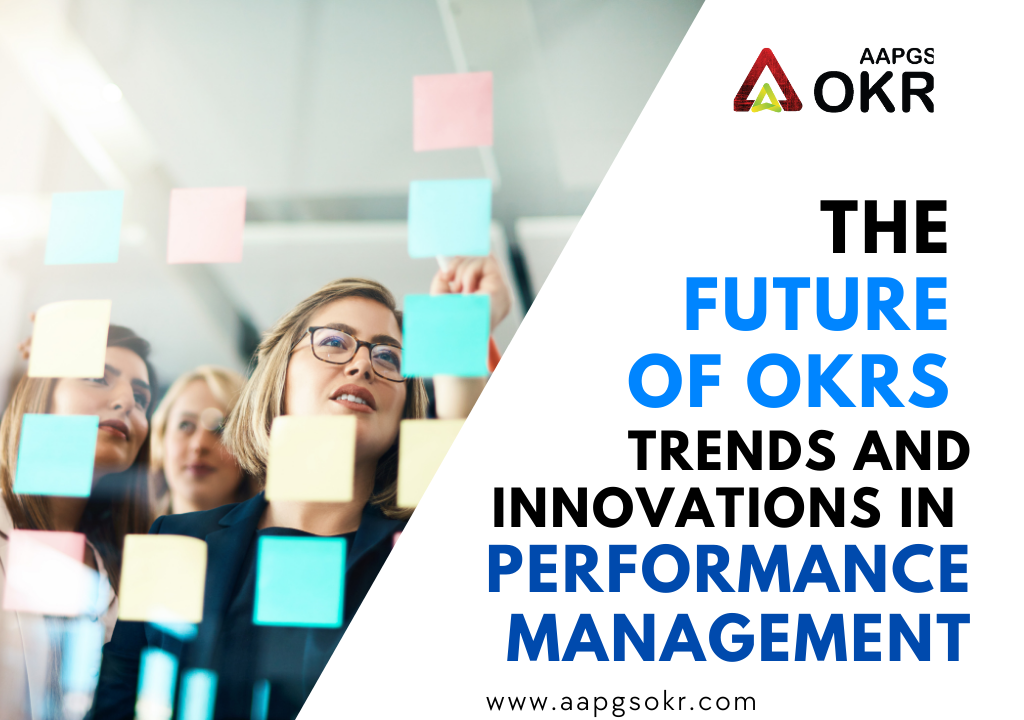Objectives and Key Results (OKRs) have become the gold standard for goal setting and performance management in organizations. But as technology evolves and workplace dynamics shift, OKRs are also adapting to meet the needs of the future.
The future of OKRs is about leveraging innovations such as artificial intelligence, real-time analytics, and customized frameworks to drive better outcomes. This blog explores emerging trends and innovations in OKRs that are shaping the future of performance management.
The Evolution of OKRs
Initially developed to help organizations align their goals, OKRs have come a long way. From static quarterly reviews to dynamic, real-time goal tracking, OKRs are now more agile and responsive. With advancements in technology and workplace strategies, OKRs are evolving to focus on:
- Data-driven insights for better decision-making.
- Enhanced collaboration, especially in remote and hybrid environments.
- Personalization to suit individual and team-specific needs.

Future Trends and Innovations in OKRs
1. AI-Powered OKRs
Artificial intelligence is transforming how organizations manage their OKRs. AI-driven tools analyze historical data, predict future trends, and offer insights to set more accurate and impactful objectives.
Benefits:
- Predictive insights for goal-setting accuracy.
- Automation in progress tracking and reporting.
- Smarter recommendations for adjusting OKRs based on real-time performance.
2. Real-Time OKR Tracking
Gone are the days of quarterly updates. Real-time OKR platforms enable organizations to monitor progress instantly, fostering faster decision-making and accountability.
Key Features:
- Live dashboards for instant progress visibility.
- Automated alerts when objectives are off-track.
- Real-time data synchronization across teams.
3. Personalized and Adaptive OKRs
The one-size-fits-all approach no longer works in today’s diverse workplaces. The future of OKRs lies in personalization, where goals are tailored to individual strengths, roles, and team objectives.
Why It Matters:
- Increases engagement by aligning personal growth with organizational goals.
- Encourages ownership and accountability at all levels.
- Adapts OKRs dynamically based on changing roles and responsibilities.
4. OKRs in Remote and Hybrid Workplaces
The shift to remote and hybrid work environments has accelerated the need for digital OKR tools that promote alignment and collaboration.
Innovations:
- Cloud-based OKR platforms for global access.
- Integration with collaboration tools like Slack and Microsoft Teams.
- Virtual OKR check-ins to maintain team alignment.
5. Data-Driven Decision-Making
Data analytics is playing a critical role in enhancing OKRs. Advanced analytics tools provide deeper insights into progress, challenges, and opportunities for improvement.
Features to Watch:
- Heatmaps highlighting underperforming objectives.
- Predictive analytics for future goal-setting.
- Comprehensive reports on OKR trends and performance.
6. Focus on Employee Well-Being
The future of OKRs is not just about business outcomes but also about fostering employee satisfaction and well-being. OKRs are evolving to include objectives related to mental health, work-life balance, and diversity.
Examples:
- Objectives to promote team collaboration and reduce burnout.
- Key results tracking employee engagement and satisfaction metrics.
7. Integration with Broader Ecosystems
OKR platforms are becoming more integrated with other business tools, such as CRM software, project management tools, and HR platforms.
Benefits:
- Streamlined workflows with fewer silos.
- Unified data sources for more comprehensive insights.
- Seamless goal tracking across departments.
How Organizations Can Prepare for the Future of OKRs
1. Invest in Advanced OKR Tools
Adopt AI-powered and real-time tracking OKR platforms to stay ahead of the curve.
2. Train Teams on OKR Innovations
Equip employees with the knowledge and tools needed to leverage OKR innovations effectively.
3. Foster a Culture of Agility
Encourage teams to adapt quickly to changing objectives and embrace data-driven decision-making.
4. Align OKRs with Broader Goals
Ensure that OKRs support not only business outcomes but also employee development and well-being.
Benefits of Next-Generation OKRs
- Improved Agility: Real-time tracking enables faster responses to change.
- Enhanced Collaboration: Digital tools foster alignment across distributed teams.
- Greater Accountability: AI-driven insights provide clarity on individual contributions.
- Better Decision-Making: Data analytics empower teams with actionable insights.
- Personalized Growth: Tailored OKRs improve engagement and motivation.
Conclusion
The future of OKRs is bright, with trends and innovations redefining how organizations approach goal setting and performance management. From AI-powered insights to personalized frameworks, OKRs are evolving to meet the demands of modern workplaces. By embracing these changes, organizations can unlock new levels of productivity, alignment, and success.
Looking to future-proof your organization with advanced OKRs? Contact us to discover how we can help you implement next-generation OKR solutions for your business!

